Trade Show Exhibit Design: It pays to “Think Big”
If you want a Trade Show exhibit that is memorable and persuasively communicates your brand, keep it focused on one overarching idea. Think Big. Create a “Big Idea”.
 When a prospect walks into a Trade Show they are confronted with hundreds – even thousands of different marketing messages. If you are lucky, your company will have 15, maybe even 30-seconds to capture that prospect’s attention.
When a prospect walks into a Trade Show they are confronted with hundreds – even thousands of different marketing messages. If you are lucky, your company will have 15, maybe even 30-seconds to capture that prospect’s attention.
The less you try to say, the more people remember.
One way to break through the competitive clutter is to have a single-minded message – a simple statement that sums up the most important thing you can say about your company that will convince a prospect to consider buying your product – and then to communicate this message with creative that is attention-getting and memorable. This is often referred to as a “Big Idea”.
What if your company doesn’t have a single-minded message?
Sometimes the answer is already part of your company’s marketing program. For most companies, particularly B2B firms, I have found that there is no single-minded message in the advertising and marketing communications. Usually, there is a well thought out graphics standard, a nice logo and tagline, and some positioning and benefits copy on collateral and the company’s website.
If your company doesn’t have a single-minded message, develop it. Look for a key insight about your brand. Start with your customers’ buying behavior to discover one significant reason why customers buy – or why they don’t buy – from your company.
Then answer this “simple” question, “What is the one thing we want to say to our target customer to convince them to buy from us?”
Ask the people who work with you the question. Sometimes the head of Sales and Marketing can answer the question immediately. But if no one can answer the question, answer these three questions:
- Why do you need a big idea?
- What is the problem you are trying to solve?
- Why does the problem exist?
Then sum up the answers into a one sentence response that answers the question, “What is the one thing we want to say to our target customer to convince them to buy from us?”
How can you come up with a “Big Idea”?
Once you have a single-minded message, you can start to work with your creative team to create a “Big Idea” that powerfully communicates the message. A good place to start is to select an exhibit marketing support firm that has the capability of working with you to craft this “Big Idea” and to align every aspect of your trade show effort to support the “Big Idea”.
Communicate this “Big Idea” in every element of your trade show exhibit – from the graphics and exhibit to the people who are staffing your booth to promotional materials – make sure that everything is building an attention-getting, memorable message.
You can incorporate your “Big Idea” into all the elements of your trade show program:
- Exhibit theme
- Live presentations
- Traffic building attractions
- Booth staff
- Pre-show promotion
- Lead response and follow-up
Does your company have a single-minded message? Has your exhibit marketing support firm delivered a big idea for your company?
Trade Show Exhibit Design Secrets: The Star of the Show
Your trade show exhibit should be designed to focus on your products, not your display. This doesn’t mean that the graphics need to be subdued or your booth needs to be boring. It means that the graphics, colors and lighting should be integrated to draw attention to your product.
Make your products the star of your trade show display
Don’t be afraid to be bold. Use high-impact colors that will stand out at a distance. A bland  color palette will blend into the background and not draw attention or focus the audience on your product.
color palette will blend into the background and not draw attention or focus the audience on your product.
Be brand-true. You should support and build on your brand campaign. But your exhibit also needs to go beyond the brand message and convey what your company is about.
Use exhibit graphics to draw in high-potential prospects for your product. People can “read” images faster than they can read words. Use images to clearly define what your company does and to attract your target customers. Images are also an effective way to filter out people who are not likely buyers so that they do not take up your staff’s valuable trade show time.
Limit your product display to focus on signature products. No matter how large your trade show exhibit space is, it is easy to dilute the overall impact of your display with visual clutter from too many products. If you want to tell an assortment story, organize your products into groups. Trade show attendees are most interested in new products and your most important products. You can use collateral materials or electronic product directors to provide information on your full product offering.
Use lighting to spotlight what is important. Lighting can accentuate the most important information and make your products stand out. Be creative in how you use lighting to draw attention to your products. Backlighting graphics, for example, can increase initial awareness and recall of your exhibit.
The design of your trade show display can draw attention to your product. The right graphics, colors, and lighting can grab the attention of your best prospects and make your trade show exhibit a true product showcase.
Which Trade Show is Right for you?
It is an age old question – should we exhibit? This question surfaces on a regular basis in all marketing departments. There are certain shows, based on their great performance in the past, that are no-brainers. But there can be others which you may not know much about.
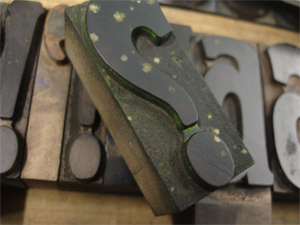 Ask Customers and Prospects about the Trade Shows They Attend
Ask Customers and Prospects about the Trade Shows They Attend
The first point is to simply ask others about the trade shows that they like and attend. Make it a habit to ask customers and prospects alike “which trade shows do you attend?”
- Which is the “best” one for finding new products?
- How are the shows different and what makes them different?
- If they often attend more than one – which one is most important?
- Which one would they skip if they had to choose?
- Which show(s) have caught their attention, but haven’t yet made a priority?
You might consider conducting a short survey that can be sent out to your prospects and customers to solicit their responses. There are many free survey tools available to use, like Survey Monkey, Zoomerang, and others.
Talk with the Trade Show Organizer
The show organizer’s job is to be an expert on who attends their events. Typically they have concrete, measurable registration surveys and audits for you to view. Initially, you can review their prospectus; then, if it looks like a fit for you, call them directly. They know that a successful show is predicated on the right buyers finding the right vendors. Consequently, they make a science out of profiling their customers, and you should too.
To begin profiling your customer, start with these questions: Who do you want to attract to your exhibit booth? Who are the ideal customers for your product and/or service and what is important to them? Depending on whether your market is, business to consumer, or business to business, the criteria will be different. Regardless of the specific terms, you will need to define your customer. The broad range of data categories are: demographics (who is my customer), psychographics (what do they do), behavioral (how do they do it) and causation (why they do what they do). According to Barry Siskind in an article called The Right Place to Exhibit – A Strategic Approach, “causation is the sum total of all the demographic, psychographic and behavioral data you have accumulated. It matches up your features and benefits with your customers’ perception of their importance.”
As you profile your target audience, you can ask questions to find out where they are and the best way to reach them. Given that shows have various geographic focuses (regional, national or international), you will want to choose those ideally suited to both you and the audience you serve. Ultimately, you have plenty of choices, though finding the right trade show can be challenging. “The right show is a blend of audience, cost and logistics. Good event selection is a solid base upon which the rest of your exhibit program is built,” Siskind reminds us.
Resources for Locating Trade Shows
If you need to look up a show, here are several online resources for you.
Events in America: www.eventsinamerica.com
Trade Show News Network: www.tsnn.com
The Trade Show Calendar: www.thetradeshowcalendar.com
Selecting the right trade show is just the beginning of the process.
Long after the Trade Show is Over Where Will the Swag Be?
 Swag is a part of the DNA of every trade show booth. Some items have been worth their weight in gold, due to the attendee’s reaction to them, while some were a waste of money. Will the promotional product make it home or will it be left in the hotel room? There are many questions which should be posed and answered as you consider the worthiness of this endeavor.
Swag is a part of the DNA of every trade show booth. Some items have been worth their weight in gold, due to the attendee’s reaction to them, while some were a waste of money. Will the promotional product make it home or will it be left in the hotel room? There are many questions which should be posed and answered as you consider the worthiness of this endeavor.
The ultimate question is: does that Tchotchke really matter, and will it move the person along the sales funnel? Depending on your target market and what they expect, answers can vary. Below are some questions to consider when reviewing the options for your giveaways.
Questions, Ideas to Consider When Choosing a Tchotchke
- How useful is it? Is this item something you would truly use after the show is over?
- How does this piece relate to your company and its brand? Will it reinforce your brand image?
- How can this swag be tied to the overall booth theme?
- Will this item be kept at the recipient’s office? Or is it a fun item that will be given to someone at home, like a child?
- Is there a way that this item can share your unique sales proposition?
- Can this item easily go through security at the airport?
- What types of conversations can the booth staff build around this item as it is being given away?
All of these questions should be reviewed to determine what to choose or pick out. Unfortunately, due to the hurried nature of getting ready for a show, the selection of the “right” promotional product is at the bottom of the list of tasks to accomplish.
Kathleen Hanover has written a post titled: Trade Show Marketing Tip: How To Choose Smart Swagwhere she presents a great idea:
“Let’s say your company sells a breakthrough solar panel that is 27% more cost-efficient than anyone else’s. Why not give away a small, solar-powered calculator? And what if that calculator had a formula printed on it that the recipient could use to calculate her cost savings over your competition? (Needless to say, it would also have your logo, tagline, and other pertinent details.) The possibilities are endless.”
Think about two different types of giveaways. Use a less expensive, but effective, giveaway for the freebie vultures for those people that come by your booth looking for the free giveaway. Don’t totally discount these people because they may actually just be trying to get your information and the giveaway will cause them to think of you whenever they use it. The second giveaway should be something a little nicer. It is a reward and thank you for a visitor stopping and engaging in genuinely interested conversation regarding your product. You definitely want to give them a reason to remember you.
Consider a Charitable Gift Rather than Swag
Depending on the audience at the show, a contribution to a charitable cause might gain more recognition for your firm than a giveaway. The show might have a cause they are supporting, like a food bank or a local animal shelter. You could coordinate your efforts with the show to add your contribution along with theirs. Let the press know what you are doing in lieu of spending money on giveaways and you might be able to gain positive exposure for your efforts. The press would be seen by show attendees and those who are not there.
Choosing the appropriate gift is often on a trial and error basis. Consult with a promotional products expert to discuss the wide range of options at your disposal. They can guide you in selecting the right item which will meet and possibly exceed your goals. Walk the show aisles to see what other exhibitors are using. You might see something which can be used for another show.
The good news is you have many options to choose from which can allow you flexibility in meeting budgetary considerations. What has been a great giveaway for you in the past?
Trade Show Targeting – What Makes My Customer Tick?
Understanding the business concerns, issues and problems of your prospects and customers is paramount in crafting a marketing message. This message is a critical component of your trade show plan, as well as your business marketing plan as a whole. However, it is not easy to tap into their minds. This process requires market research to effectively derive their characteristics for purchasing. During the last few years, the buying patterns have changed and possibly your customer persona has evolved into a totally different person. Keeping up with the shifts and changes can be difficult.
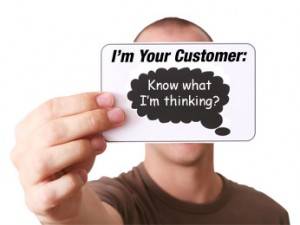 One way to tune into the mindset of a customer base is using focus groups. They can be quite effective in uncovering the thought processes and preferences of an audience. If you are not familiar with this research form, let me provide some additional information.
One way to tune into the mindset of a customer base is using focus groups. They can be quite effective in uncovering the thought processes and preferences of an audience. If you are not familiar with this research form, let me provide some additional information.
What are Focus Groups?
Focus Groups are great at capturing the attitudes and opinions of a “selected” group(s) of individuals. The moderator poses questions to the group affording the participants the opportunity to share their views. It is important to remember that these groups are qualitative in nature and sometimes would need to be followed up with a quantitative research project to ensure statistical reliability.
However, the catalytic nature of focus groups can provide direction as to what the next steps should be in the evolution of the idea being tested.
In essence – you are testing ideas or communication messages to determine if they are on target or not. Customer and prospect language or what they “hear” can be TOTALLY different from what you are communicating. Being in tune with your audience can spell s-u-c-c-e-s-s.
Using Online Research to Probe the Minds of Your Customer
Rather than in-person focus groups, participants are recruited for the online experience. Typically, 12 – 15 are secured and they commit to the process.
- A research moderator posts questions over the course of several days as the conversation evolves and probes respondents for details and clarifications when needed.
- Respondents can log in and answer each days’ questions whenever it’s convenient for them – some folks are online at the crack of dawn, some like to log in and take a break during work hours and others log in after dinner is done and the kids are in bed. Being convenient means that respondents can take time to think about the questions and provide thoughtful answers.
- Clients are able to log in and observe the discussion and leave private messages for the moderator regarding comments they would like clarified or suggestions for new topics.
- They last over a three-day period which allows for reflection on questions answered and possible modifications to the moderator’s script.
The participants interact with each other and the moderator as they provide their valuable insights to questions posed. In the process, all sorts of light bulbs are illuminated and most often a new, enhanced direction is revealed.
Mike Courtney from Aperio Insights shares these insights when considering online focus groups to determine your trade show messages.
Most likely there is a current marketing communications campaign going on within your company. Does your audience really understand the campaign or is there some confusion on the message you are attempting to convey?
Or you can assess whether your prospects deem you as a trustworthy resource. Or do they trust your competition more than you?
Have the prospect or customer “explain” your services or products to the moderator of the online focus group. Are they accurately defining your offering? Note: this question can be quite revealing as to how far off the mark your audience is to what your product does or what your marketing message is.
One other word of note – research can beget research. The more you uncover – additional questions will surface.
As you research and make your trade show marketing plan, consider taking the pulse of your customers. If you can translate their heartbeat (the business issues) into your marketing message, a match is made and most likely you will have a new customer.
Making Sure Your Booth Gets to the Trade Show
This horror story happens – you are at the show, but your booth isn’t! Somehow it was lost or misplaced in transit. This post covers the basics of transporting your booth property to the show site. It is important to note, this is one area where you can experience savings by planning ahead.
 Candy Adams, in her article on Exhibitor Online Lost in Transportation provided 12 questions you should ask regarding transportation to avoid any snafus. One question is, “where is your freight going?” Her response:
Candy Adams, in her article on Exhibitor Online Lost in Transportation provided 12 questions you should ask regarding transportation to avoid any snafus. One question is, “where is your freight going?” Her response:
The quickest way to not get your shipment to a show is to provide inaccurate or incomplete shipping information. But there’s more to getting your freight from Point A to Point B than filling out a shipping label and affixing it to a box. Specifically, you need to tell your transportation carrier whether the shipment needs to go to the trade show’s advance warehouse, or direct to the show site. If you don’t make the distinction, you might be sitting in your booth space waiting for your freight to arrive from the advance warehouse, while it’s still en route direct to the show and set to arrive the following day. Not only will you not have your freight, but your setup costs will escalate as the installation laborers twiddle their thumbs until it arrives. What’s more, the additional day it takes the freight to travel direct to show site can result in late-delivery penalties if you miss your on-site targeted delivery deadline.
As Candy stated, you have choices on how you can ship your materials to the show. You can ship them to:
Advanced Warehouse by a certain date
-Or-
Direct Deliveries to the Show Site on specific dates
Each show will have a designated shipping company for you to use and their information can be obtained in Exhibitor Kit supplied by show management. However, you may have a preferred carrier, one you use regularly.
Key Questions which Determine Freight Costs
As you are working with the transportation issues, these are key pieces of information which will determine the cost of freight:
- Number of Pieces
- Estimated Weight
- Estimated Size
- Addresses for Pickup/Delivery
Remember, items that arrive after the receiving deadlines can incur additional charges. Once again, you can save money by planning ahead!
An important note: make sure you have the address of the venue correct. Candy shares in her article:
There can be confusion, especially in major cities, if a specific street address or hall designation isn’t provided. I’ve witnessed freight delivered to the wrong convention center in cities with multiple exhibition facilities, and to the wrong Marriott or Hilton since there can be multiple chain hotels in metropolitan areas. Unless you want your carrier to guess which venue is the correct destination, provide the full venue name and street address.
Transportation Timing and Charges
The shorter the transit time, the higher the charges are for most deliveries. Here is a brief summary for your review.
- The lowest charges are usually common carriers, but unless you pay a large premium, you cannot designate the delivery date. This works mostly for advance receiving shipments but does not work at all for direct to show site shipments.
- Next lowest is the 3-5 business day. Lots of flexibility in that the shipper can designate day and time to deliver as long as we have at least 3 business days. If they designate a time, or if the day is on the weekend or a holiday, there is an extra charge.
- The 2nd Business day is still higher priced. The shipper can still designate date and time.
- Overnight is higher still.
- Same Day is the highest cost, and it will be delivered as quickly as possible.
Transportation companies designated by show management or those you have used in the past can be great resources for you. If you are new to this, ask questions. Typically, you will find great advice from them and if you plan ahead you can save money.
Transportation problems can be avoided by careful planning. This is an area where you want time to be on your side by advance scheduling.
Dismantle: Where Tradeshow Exhibit Damage is Done
Reduce Damage to Your Trade Show Exhibit During Post-Show Dismantling
Most tradeshows are open for 3 or 4 days. If you have ever been on the show floor during the last 2 hours of the show, you will see an amazing transition take place.
One week earlier there was an air of excitement and urgency as the exhibit crates were delivered to the booth spaces. Installation crews worked against the clock to get everything just right prior to the show opening. The night before the show, crews remove all of the empty crates and trash and roll out the aisle carpet. As the show opens, the sales staff arrive at their booths in their crisp business attire, anxious to grab anyone with an attendee badge and make their pitch.
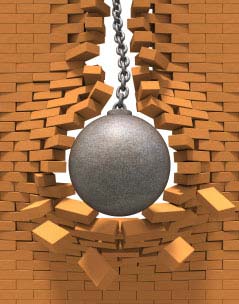 In contrast, by afternoon on the last day of the show, the booth staff is tired, the traffic is light and everyone is ready to rush to the airport. Often, the booth staff will be required to stay after the show closes and take down the booth. It is sufficient to say they most likely will not use the same care in taking the booth down as they did in setting it up. Expensive display components are often pulled, yanked and ripped down and then stuffed, smashed and crushed into shipping containers.
In contrast, by afternoon on the last day of the show, the booth staff is tired, the traffic is light and everyone is ready to rush to the airport. Often, the booth staff will be required to stay after the show closes and take down the booth. It is sufficient to say they most likely will not use the same care in taking the booth down as they did in setting it up. Expensive display components are often pulled, yanked and ripped down and then stuffed, smashed and crushed into shipping containers.
In the end, what seemed like a great way to save money, instead ends up costing you dearly. In my experience, there are a couple of ways to reduce the chances of damage during post-show dismantle. The first would be to pay an installation and dismantling company to dismantle and pack the booth. This is not always feasible, especially if you set the booth up yourself. If you cannot hire someone, then designate one or two members of your staff to stay at least one extra day to take care of dismantling the display. If these people know that they are not going to be flying out the night the show closes, they will be much more likely to take their time when packing the display.
A good double check is to have the display thoroughly inspected upon its return. If it has been improperly packed, you will want to know about it immediately so that you can have it repaired before its next use. Need an on-site tradeshow specialist there from set-up to tear-down? Let’s talk.
What to Look For in an Exhibit Design and Cost Proposal
Make sure your trade show costs fit into your budget.
One of the biggest challenges that exhibit marketers face is that their bosses give them a solid budget to do a show, but the vendors that they need to make it all happen refuse to lock into a quotation. This problem exists in just about every area of tradeshow expense.
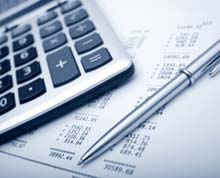 Most display companies will provide quotes for design and construction but do only “budgetary estimates” for field services. This leaves the door wide open to budget-blowing additional charges after the show. When clients ask for firm quotes for drayage, I&D, or electrical, their Account Executives deliver a well-rehearsed speech that they “cannot quote services that they can’t control,” or some other excuse their bosses have taught them.
Most display companies will provide quotes for design and construction but do only “budgetary estimates” for field services. This leaves the door wide open to budget-blowing additional charges after the show. When clients ask for firm quotes for drayage, I&D, or electrical, their Account Executives deliver a well-rehearsed speech that they “cannot quote services that they can’t control,” or some other excuse their bosses have taught them.
Also, General Services Contractors provide forms and other tools to allow trade show exhibitors to estimate their own field services costs but then insist on a credit card on file so that actual charges can be tacked on after the show. How in the heck do you budget for this?
There are exhibit companies that provide “turn key quotations” – if you absolutely cannot exceed a certain budget for a show, I would recommend that you find one. You will always have problems budgeting for hotel accommodations, travel expenses, and other show related costs, but you’ll at least be able to get the cost of your display, shipping, setup and dismantle, and utilities locked in.
We are ready to earn your business! Let’s talk.
A Perfect Tradeshow Vendor Relationship
Finding the perfect vendor to support your tradeshow program can be challenging, and there is no one-size-fits-all solution, but with the right things in mind, you can hit your target. As with any other decision, the preparation you put into it will greatly affect your level of success.
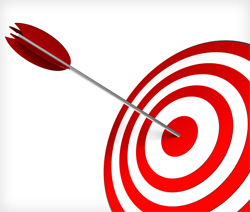 Typically, the decision for an exhibit supplier is made during the purchase of a new display. It may seem logical that the company that built the display would be the best choice to manage it. Sometimes that may be true, but often the problem is that the companies that do the best job of design and presentation are not always the best at program management. Their company’s focus might be on designing and building new exhibits, leaving program management to take a back seat.
Typically, the decision for an exhibit supplier is made during the purchase of a new display. It may seem logical that the company that built the display would be the best choice to manage it. Sometimes that may be true, but often the problem is that the companies that do the best job of design and presentation are not always the best at program management. Their company’s focus might be on designing and building new exhibits, leaving program management to take a back seat.
A good start in your search is determining how much help you will need, and the size of your program:
- Pharmaceutical companies might exhibit in over 100 shows per year, not including other events that are a large part of their face to face marketing. Auto manufacturers exhibit in 65 or more shows in the span of a few months. These types of companies usually prefer to deal with the largest exhibit companies.
- Companies that participate in fewer shows each year in smaller configurations may not get the level of service that they need from a huge exhibit company, and often end up being the proverbial “small fish in a big pond.”
In order to find the best match for your needs, give some thought to how much support you will need from your exhibit company. Some companies need only basic assistance, such as storage, preparation and minor repairs. Others rely more heavily on an exhibit company to handle the entire show including show services, graphic design, shipping, etc. Be sure to consider how important your scale of business will be to your new vendor and whether you will have access to senior management in the event that problems occur.
While experience in your specific industry is a valuable thing, use caution in looking for a company that has several other clients in your most important show, as you may find that they are stretched too thin to provide the best service. Also, there are many other factors that contribute to the success of a vendor/client relationship, but a vendor’s efforts to become the best partner should always involve a willingness to listen and adapt to the client’s preferred ways of doing business.
Are you considering changing tradeshow vendors? Let’s Talk.
What is a Custom Tradeshow Exhibit?
Next to the word portable, the word custom is the least clearly defined term in the trade show business. Marketers from various display companies add “custom” to almost every product description. It sounds good and makes it easier to justify high costs.
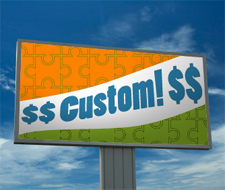 My definition of custom is something that is designed and constructed one at a time versus something that is engineered and mass produced. In general terms, display companies are either building displays one at a time or operating like a typical mass production company by designing products, doing the research and development and going into mass production.
My definition of custom is something that is designed and constructed one at a time versus something that is engineered and mass produced. In general terms, display companies are either building displays one at a time or operating like a typical mass production company by designing products, doing the research and development and going into mass production.
So, what does this mean to the buyer? There are advantages to both types.
Traditional Custom Exhibit Company
Designers at a traditional custom exhibit company can allow their imaginations to run wild and (assuming there is enough budget) the shop can produce it. There is no need to try and fit the design into a certain type of construction material or system. These displays are mostly unique but may end up to be heavier and bulkier.
System Component “Custom” Exhibit Company
Designers at a system type of company do some pretty amazing designs but are generally limited to using components from a catalog. The advantages to using system components are that they are, in general terms, better engineered, lighter weight and packaged more efficiently. Cost differences between the two types are negligible.
So, now that you know the difference, what do you do? In my opinion, if you are using the exhibit at 5 or fewer shows per year, buy the best design from a reputable supplier. If you go to more shows, the engineering and packaging issues are more important.
Either way, don’t be fooled by the word custom. Find out exactly how your display will be produced and make the choice that is right for you.
Archives
- July 2021
- June 2021
- May 2021
- April 2021
- October 2018
- September 2018
- August 2018
- July 2018
- June 2018
- May 2018
- April 2018
- March 2018
- February 2018
- January 2018
- December 2017
- November 2017
- October 2017
- September 2017
- August 2017
- July 2017
- June 2017
- May 2017
- April 2017
- March 2017
- February 2017
- January 2017
- December 2016
- November 2016
- October 2016
- September 2016
- August 2016
- July 2016
- June 2016
- May 2016
- April 2016
- March 2016
